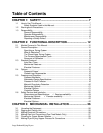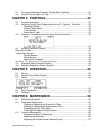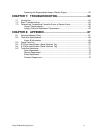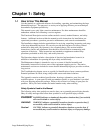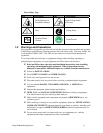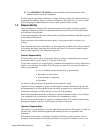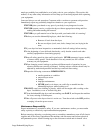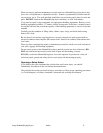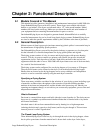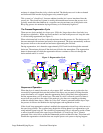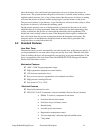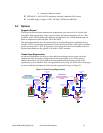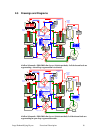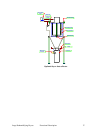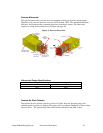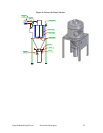
Large Dehumidifying Dryers Functional Description 12
Chapter 2: Functional Description
2-1 Models Covered in This Manual
This manual provides operation, installation, and maintenance instructions for 600-3000 cfm
Large Dehumidifying Dryers with AP1 control. These dryers are available with electric
heaters or gas burners. Gas dryers are indicated with a “G” in the model number. Model
numbers are listed on the serial tag. Make sure you know the model and serial number of
your equipment before contacting the manufacturer for parts or service.
Our dehumidifying dryers are designed to generate heated, dehumidified air at carefully
controlled temperatures for use in closed-loop plastic drying systems. Dehumidifying dryers
are sized to meet the specific requirements stated by the Customer at the time of purchase.
2-2 General Description
Moisture removal from hygroscopic (moisture attracting) plastic pellets is an essential step in
the manufacture of high-quality plastic products.
Our Dehumidifying Dryers are used by the plastics industry to generate very low dewpoint
air that is heated to a controlled temperature for drying plastic pellets and regrind.
The drying system consists of a dry air source and drying hoppers with process heating
controls. The dry air source controls two primary sub-systems, the process air and the
regeneration circuit. Each dryer has a left and a right desiccant bed so that one bed can
regenerate while the other is in use. 2000-3000 cfm dryers feature two sets of desiccant beds,
for a total of four desiccant beds.
The drying system can be configured for one drying hopper or for as many as 20 hoppers.
The process air heater can be located on the dryer or on each individual drying hopper.
Heaters that are located on the drying hoppers can be set up with their own independent
controls or can be controlled centrally using the main dryer controller.
Specifying a Drying System
There were many variables considered in the selection of your drying system, including: type
of materials, residence time, throughput of the extruder or injection molding machine,
ambient air moisture and temperature, and the altitude at the processing site. Should your
operating environment change, we can advise you on necessary equipment, process time and
temperature modifications.
What is Desiccant?
Desiccant is a material that attracts and holds (absorbs) water from the air. The desiccant our
dryers use is a synthetic crystalline metal aluminosilicate that is blended with a clay binder
and formed into beads.
Absorbed water is driven from saturated desiccant by heating it to a high temperature
(reducing the desiccant's capacity to hold water) and forcing air through it. This moisture
removal process is called "regeneration".
The Closed Loop Drying System
These dehumidifying dryers force hot, dry air through the resin in the drying hopper, where
the air picks up moisture from the material and is drawn back to the dryer. In the dryer,



